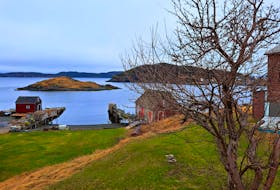By Kathy Cloutier
There is a growing conversation regarding closed-loop pulp mill treatment systems and, specifically, why did consultants hired by the province and Northern Pulp not design a zero-effluent solution. As confirmed by expert consultants, a zero-effluent bleached kraft mill does not exist at this time. Therefore it cannot be argued that it is a question of “spend the extra money” to design a closed loop system for Northern Pulp. The technology is simply not available for Northern Pulp’s process.
There is a mill in Tumut, New South Wales, Australia (Visy Tumut Kraft Mill), that is an unbleached kraft mill built in 2001. The Tumut mill operates a closed-loop water system, where all the mill’s wastewater is land-applied in irrigation for agriculture crops. In a bleached kraft mill, of which Northern Pulp is, the majority of the effluent comes from the bleach plant. You cannot directly compare the two systems (unbleached versus bleached) as they are not the same process.
References have also included a Louisiana Pacific Mill in Samoa, California, which is an older mill converted to chlorine-free bleaching (TCF) that has not been in operation for nearly a decade. Although the Samoa mill was a bleached kraft mill its process was far more similar to that of the unbleached Visy mill due to the lack of chloride in the effluent.
- has been made to Paper Excellence's Meadow Lake Mechanical Pulp Mill in Saskatchewan which operates as a Bleached Chemi -Thermo Mechanical Pulp (BCTMP) mill with a zero-effluent (closed-loop) system. Mechanical pulping (BCTMP) employs heat, mechanical action and a pre-treatment with chemicals to separate cellulose fibres rather than by dissolving the lignin-holding fibres in the wood matrix as is done in chemical pulping, such as Northern Pulp’s kraft process. BCTMP is an entirely different pulping process than that of a kraft pulp mill.
It is important to recognize that the effluent quality of today is not the quality of decades past – specifically pre-1990s as significant improvements have been made over the years. Those improvements occurred both in the mill operation and also in upgrades of the ASB system itself. The most significant in-mill improvement came in the mid 1990s with the move away from chlorine bleaching to chlorine dioxide bleaching (ECF) to meet new federal pulp and paper effluent regulations for dioxins and furans.
The proposed new treatment system for Northern Pulp will be a modern AST system that mills and other facilities (industrial, municipal, etc.) throughout the world have in place.
The current effluent treatment system is an ASB system. In North American Kraft mills, there are predominantly two systems used to biologically treat industrial wastewater, the aerated stabilization basin (ASB or aerated lagoon) and the activated sludge system (AST). These two systems have far more similarities than differences. Both processes are based on the utilization of dissolved oxygen by microorganisms in converting organic and inorganic matter into a settleable form. The ASB process uses a large aerated lagoon and long retention times (days) whilst the AST process treats the wastewater in hours and involves two stages – an aeration stage and a clarification and recycle stage. AST systems generally operate at higher removal efficiencies as compared to ASB systems.
- BCTMP, Unbleached Kraft, Totally Chlorine Free (TCF) and Elemental Chorine Free (ECF) Bleached Kraft are four distinct pulping processes that cannot be compared on an apples to apples basis.
Treated effluent has been flowing through Boat Harbour and into the Northumberland Strait for over 50 years. The new treatment facility and diffused outfall will reduce the impact on the Strait as it is designed to meet the Canadian Council of Ministers of the Environment (CCME) guidelines for effluent discharges which stipulate that all effluent parameters of concern should meet background concentrations of the receiving water in less than 100 metres from the outfall. Spawning and fishery grounds have been taken into account in determining best outfall location for the new discharge point through the receiving water study.
When speaking of Northern Pulp and the new effluent treatment facility required for the mill to operate, it is not a question of forestry or fishery. As has been the case for the past 50 years in the Northumberland Strait, we can continue to have both in operation with no impact to one another’s livelihood.
Kathy Cloutier is Director of Communications for Paper Excellence Canada







